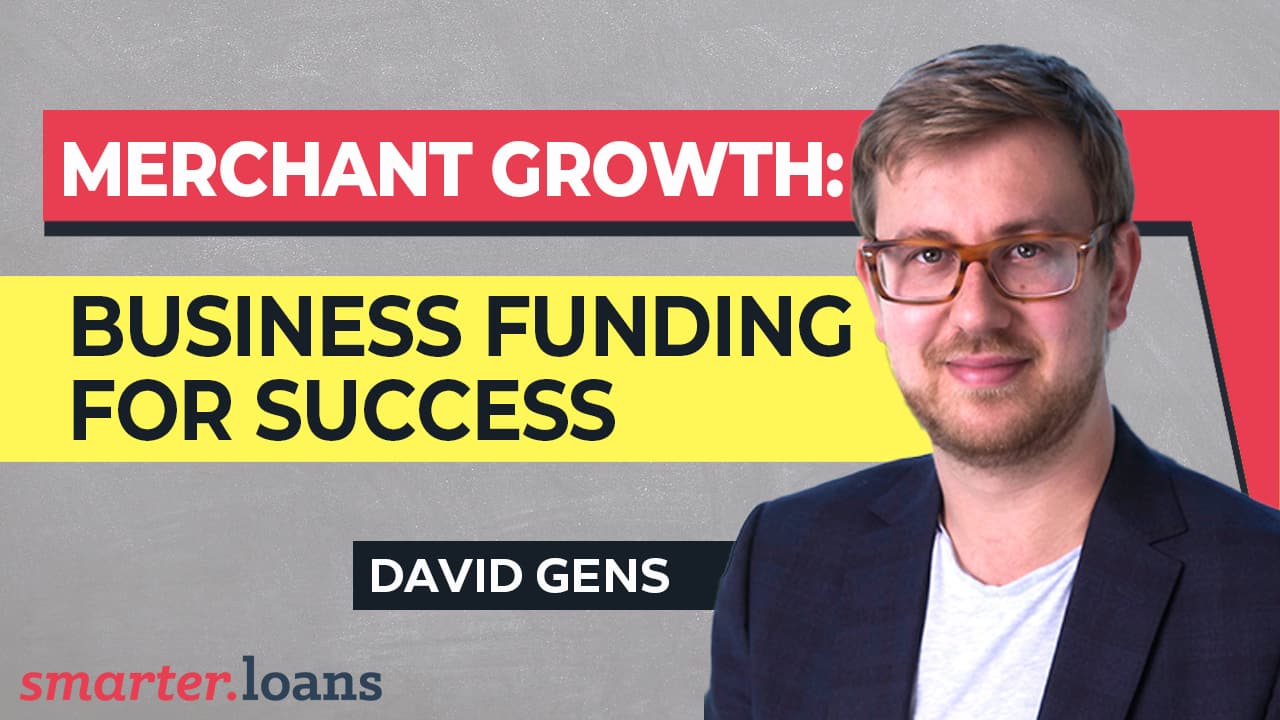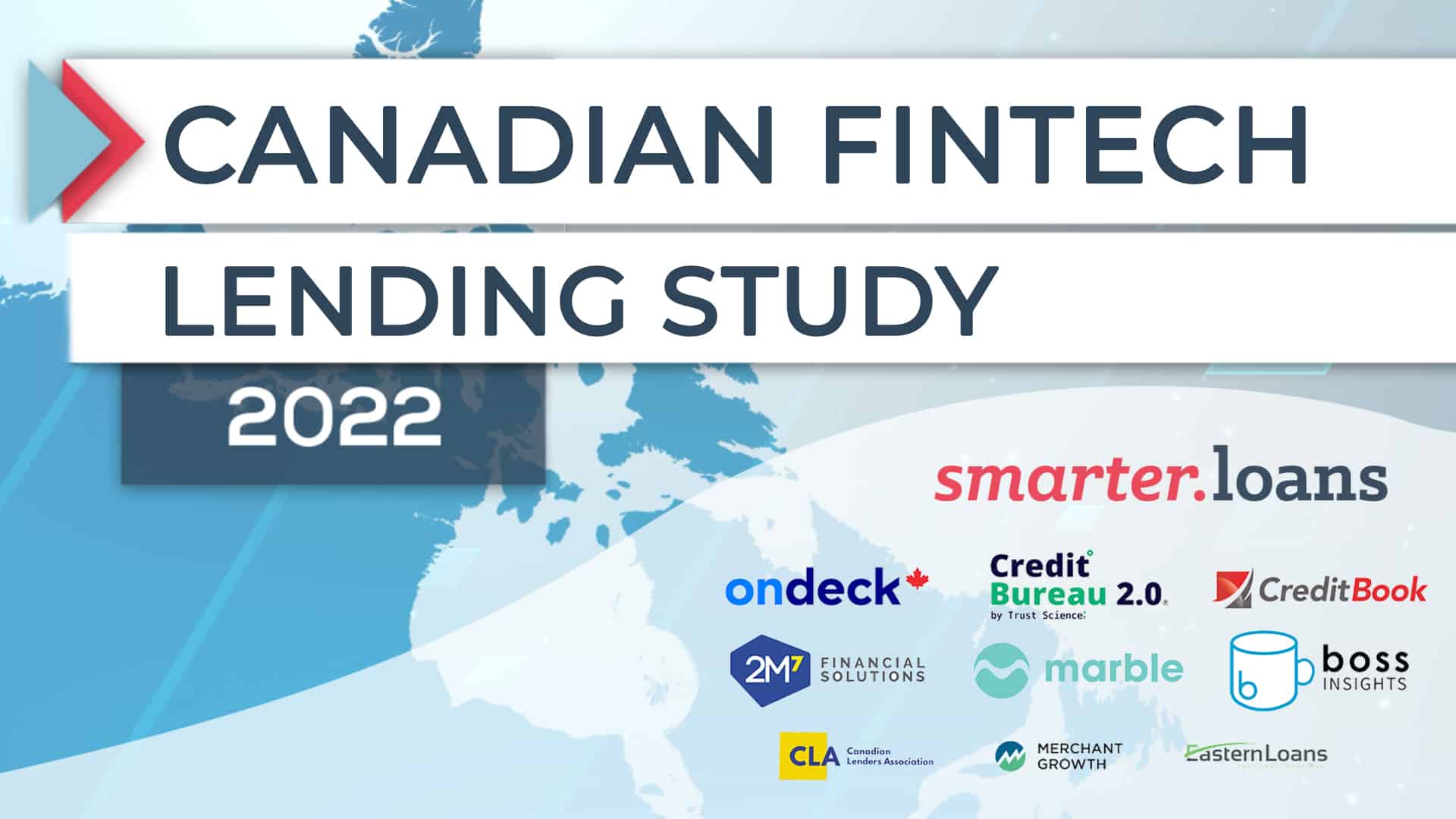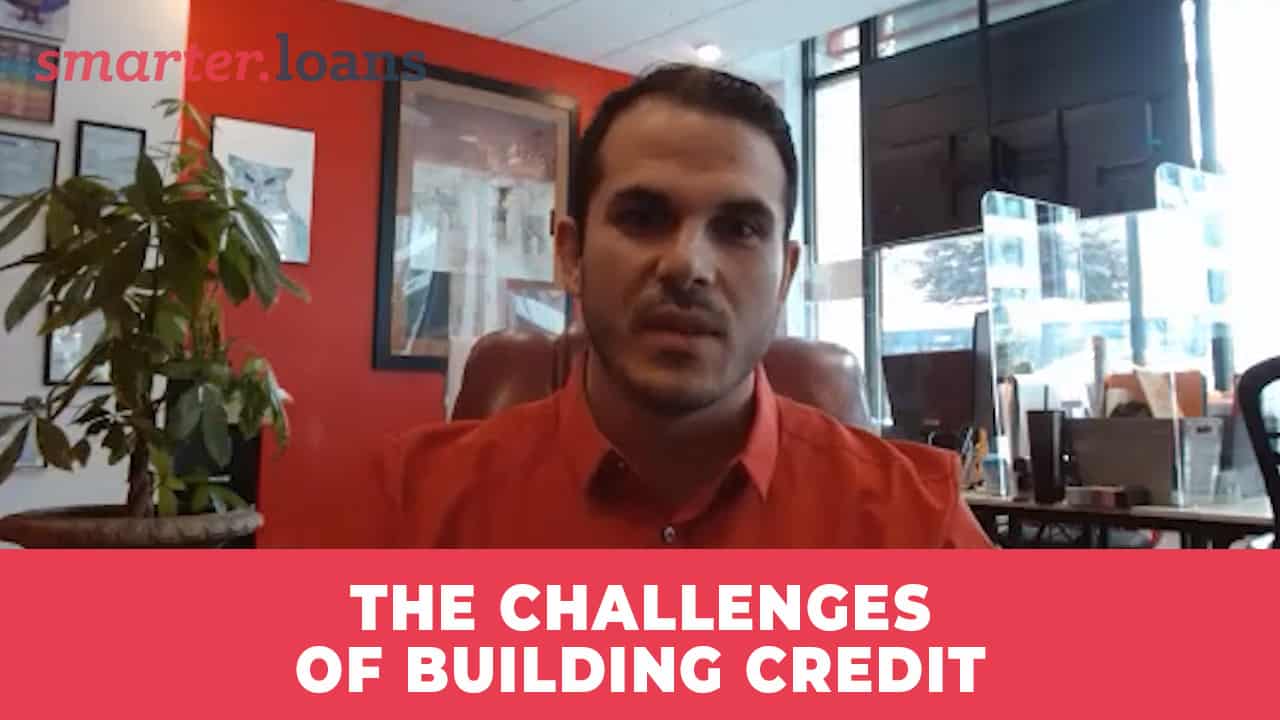On April 14, 2020, I interviewed Mario Bottone, Chief Growth Officer from Thinking Capital.
Mario joined me over a video call to discuss the impact of COVID-19 on the Canadian small business landscape, as well as the lending community, new, important trends that are emerging and will continue to emerge, the role of the FinTech lending community to help Canada deal with the crisis as a country, as well as the short term and long term outlook on what the economic recovery may look like.
Mario Bottone is the Chief Growth Officer at Thinking Capital and has led global organizations over the past 20 years.
Thinking Capital is one of the original FinTech business lenders in Canada, and has helped over 16,000 business owners with smarter access to financing since 2006.
I was very excited to speak with Mario and learn about the insights they’ve been able to gather using Thinking Capital’s vast customer base and data on daily sales activity in various sectors and regions in Canada. I hope you enjoy the video. Full transcript is below for reference.
Video Transcript
[Vlad]: My guest today is Mario Bottone. Mario has led global organizations in various sectors over the past 20 years and is currently the chief marketing officer at Thinking Capital. Thinking Capital is one of Canada’s original FinTech companies and in many ways has transformed the way small businesses access capital they need to grow. The Montreal-based company has been around since 2006 and since then has helped over 16,000 small businesses with smarter access to financing.
Amid the COVID-19 crisis, Thinking Capital has created an extensive resource library, including the Small Business Health Index which gathers sales data on a daily basis from 600 merchants to illustrate the impact on the Canadian small business landscape by industry and by region. Mario joins me today to discuss the impact of COVID-19 on the small business industry as well as the lending community, new important trends that are emerging, as well as what the short and long-term economic recovery process may look like.
Mario thank you so much and let’s just dive right in. I’ve been following the small business health index that Thinking Capital has put together that breaks down the impact of COVID-19 on small business owners both by industry as well as by geography. Can you just share some of the main insights that you’ve been able to gather so far from this health index.
[Mario]: We started to keep track of the potential impact early in March but it got obviously amplified pretty dramatically over the course of two weeks and around mid-March we were all caught a bit off guard and this is where we kind of took an initiative in light of the fact that we had roughly around 600 or so merchants’ data on a daily basis that we were tracking. We decided at that point in time to kind of take a look at what was happening with direct sales activities and of course we wanted to look at the progress or the lack of progress, I would say from week to week, day to day and also benchmark. We had a situation where we had to figure out what would be a good benchmark, suggesting something earlier in the year like February 8th and have a benchmark but we also wanted to track what was happening in the short-term and mid-term, so we wanted to have a rolling week over week look of the data and hopefully at one point or another track the recovery the economy to a certain extent as well right like some of these industries at this stage of the game have been able to make the giant leap to the next phase and kind of conditioning themselves for COVID-19 world. Thinking of restaurants and offering takeout, opportunities to providers of your product through an e-commerce channel.
There are companies that are better adapting to this. The way the data was set up is a combination and amalgamation of all these types of companies so by no means we’ll be able to parse out specific strategies that certain sectors are implementing and seeing if they’re less effective or more. It’s anecdotal. That being said it still was very early on it saw dramatic declines day to day, week over week and when everything stopped specifically for the restaurant and bar sector that’s where it fell off the cliff. There are some that are basically adapting better than others so it’s an interesting look. By no means that we have all the small business in Canada, you know we don’t have four five hundred thousand merchants reporting their daily activities here but it’s a snapshot and it still gives a view, along with other information that we provide in our Resource Centre. That’s one of the first things we did I think we did pretty quickly is we started a useful repository for small, medium business you know we could direct some of our customers to but this is an extension of that. We’re hoping that it also gives us the first lead indicators that the economy is starting to slowly but surely come back.
[Vlad]: I mean I’m looking across the board and like you said it may not be capturing every business owner out there, not capturing all the tactics and how they’re actually adapting to what’s happening but when you compare them side-by-side certain things definitely jump out like for example when you look at the grocery sector they are down but they’re down only about 12% when we’re looking at this particular week versus the benchmark week of minus 60% and the sports and leisure industry had an uptick because people are now more likely to buy fitness equipment. Can you just speak about some of the outliers that you’ve noticed where the impact from COVID is different on them that the rest of the industries?
[Mario]: There’s winners and losers in any crisis right in many ways this particular industry emerged from the industry that were in emerged from the ashes of the 2008 crisis right so companies do emerge from these type of situations. What’s different in this particular situation is that some of the companies have to get through the storm before they see the light of the day afterwards right so there’s a lot of work to be done. The key to this situation is to be able to weather the storm and to be in a position of adjusting your business model to reflect this post-COVID world because I don’t think we’re ever gonna return entirely to a state of normalcy that we had prior to this. It’s just not going to happen so you know we have to as an organization be able to identify you know those type of sectors that are going to be able to survive, stabilize and potentially thrive, and entrepreneurs across this country those have been doing business a certain way have to adapt the bounce back or the rebound scenario in the economy is going to be slow and gradual it would be a bit of a dance in many ways, certain sectors of the economy opening up while others they quarantined and some of these merchants will re-emerge with better models that allow them to go through the storm and others who are going to you know literally kind of re-emerge from this situation as completely different business or significantly different probably more accurate way of saying it.
We look at it and say to ourselves: okay, merchants that embraced an e-commerce type of approach platform or had a significant digital footprint now they’re well equipped to potentially whether this storm, you know physical businesses such as restaurants that provide an order and take-out option again they’re probably down considerably and our index suggests that but those would basically have a takeout option at least have a lifeline those businesses are are best equipped to kind of see see it through and stabilize over the course of the recovery which will be fairly long. There are local construction businesses you know we’re going to be called upon to retrofit establishments provided like post COVID-19 regulations, you’re starting to see it right now and go to grocery stores you see these glass or plastic partitions are being put up that in itself as we look as a lender and we look at organizations that have the best opportunity for stabilization and potential growth.
The thing that I think is being underestimated here and that’s fine really I would say was not in our sweet spot as a lender and talk about Thinking Capital but is something that you know has been emerging over the last five to ten years and it’s going to become more prevalent I think in this new world is the gig economy workers. In some instances they’re one or two people shops maybe they’ll have to be three four or five they’ll have to make some investments because now you can see a lot of our traditional businesses needing to require new skillsets whether it is to get help with commerce site, additional IT maybe some specialized marketing, digital marketing some logistics some physical embarkment sore retrofits for their product or their weather stations and how to deliver their product, all those different elements now will make for smaller workers, smaller sized organizations or gig economy type workers to be potentially more solicited. And those are type of organizations that might need to invest to handle more demand for their services and everything too is you know in light of some of the issues with supply chain we all experience an initial shock of going to Costco and seeing that can’t find toilet paper and other products, trying to find Lysol wipes. Where it’s possible there’s gonna be a greater dependency moving forward on doing something related to local supply and manufacturers and distributors that can assure the local supply to businesses might be able to benefit from some of these changes that are occurring.
[Vlad]: We actually did a survey a few weeks ago and we surveyed a couple of thousand business owners that are in our database and we just asked them about their situations and in the very end we also asked them to just share their story if they’re comfortable because we just wanted to see… sometimes it doesn’t come through in stats what the businesses are actually experiencing so we asked them to share some stories and there were so many cases that I read where a business was actually set up here and it could be in a manufacturing space for example or something the construction related field that they were actually able to work but the problem was that they were expecting materials to come in from somewhere else and that was literally the only sort of barrier to them actually getting through this crisis. They didn’t get shot down here they were able to stay at home they don’t have a retail store they don’t need it but they just couldn’t get the materials to do the work.
[Mario]: Exactly, and I think that’s also going to be a major consideration in terms of how we reopen the economy is what access you do have in terms of supply. As I mentioned earlier there’s no quick fix to this and I think the fix is really figuring it out from the health perspective ensuring greater testing, quarantine people faster more effectively and then letting people come back to work you know socialize with less concerns whether they’re getting this thing. There’s so many things that are emerging in terms of information right now on the health front and I suspect in a couple months from now you know we’re gonna know much more. Much more testing and that’s when we’ll feel a little bit more confident but we truly are not going to get really back to the normal situation we were back in my first where everyone until we have a vaccine I suspect.
[Vlad]: I know you talked a little bit about how everybody sort of needs to adapt and that includes the lenders as well and we all know that access to capital is so important for small business owners and not small business owners really anybody in Canada so what are you currently doing with the current customers that are coming to you and calling you and saying ‘hey I have a loan outstanding this is my situation how can you guys help me’ and my second question is…post-crisis what does a business owner think about now in terms of setting themselves up to be eligible for financing in the future and have a type of business structure and systems in place that will make them you know attractive to a lender for example like Thinking Capital so they will be able to access the working capital that they need in the future.
[Mario]: Well the answer to your first question is you know we’ve we’ve been finding ways to extend loans, reduced payments accommodated some of the cash flow restrictions that our customers have so I think we owe to them, our senior lenders have been very accommodating as well so in many ways we’ve been paying it forward in terms of the understanding that everybody has at this stage the game. This is something no one could have predicted especially small businesses who are so tight and such a big portion on our economy. The challenge we’ll have is that what work pre-covid might not necessarily work post-COVID, and we’re gonna have to figure out you know based on conditions that we think are gonna prevail, have a bit of a crystal ball, we got to look at companies differently. Certainly we want to look at businesses that were able to make it through the crisis because they have something to offer that sustained itself and are probably in the best positions that they you know to take the situation and just evolve and you know, good business owners, good business practices, well known residents maybe in a certain community, good customer base, you name it and those are type of organizations are gonna, I think continue albeit you know probably hurt by this but probably continue and we want to look at them maybe in similar ways but it is also about looking towards the future and getting a better understanding as to which which of these organizations are best suited to take advantage of some of the emerging trends I mentioned earlier, right so yeah, we’ll be evaluating them differently. There’s no question the risk model we had before will have to be adjusted to reflect this post-covid economy.
[Vlad]: do you think that in addition to just the risk model there will also be changes to the actual product offerings? I mean right now in the industry some of the primary small business financing options: you have a term loan, the merchant cash advance, a line of credit as well. Do you think that there will be sort of evolution of product offerings as well post crisis?
[Mario]: That’s a very good question. I think there will be adjustments made. I think the primary vehicles will stay similar, there might be adjustments made accordingly to reflect some of the intricacies associated with an economy that’s emerging. Maybe there’s more risk sharing potentially in certain circumstances more guarantees that need to be offered in some instances but that being said I don’t think there’s going to be dramatic changes. I think there’s just gonna be a different way of applying them perhaps to these organizations and how we evaluate risk is going yo change that’s for sure. Somebody in my entourage said the other day that restaurants have been around for 4,000 years so they’ll be around after this – it might be different they might have to abide by certain codes and approaches but there’s still be a need for people to get together and have a meal we just got to figure out which ones have the best chance of not only being sustained through this process but also thriving in a new model a new post-covid economy.
[Vlad]: What do you think is the role of the FinTech online lending community as a whole – and I know thinking Capital is one of the oldest players in the game. I’ve even heard somebody say that they were they were FinTech before FinTech became a word – I would like to know from your point of view what is the responsibility or the role that the online FinTech small business lending community should have or has right now to help us as a country get through this period.
[Mario]: In general if you look at the fact that the natural reaction everywhere is to try to tap on the shoulders of the banks of the governments and say: ‘can you help us get money into the right hands?’ Well FinTechs are uniquely positioned because we deal with these small businesses day in and day out basis, we’re talking to them they’re calling us and we have the mechanisms and the technology to get the money to them within a period of time that’s extremely reasonable. We’re hoping that we can be the big player in this and all this that being said this is about helping Canadian small businesses and we believe that the answer is technology. I believe the answer is processes that go between 48 and 72 hours from application to disbursement of funds. We want to make sure that we’re a solution that the government could utilize and the agencies can utilize to get the monies to the right people at the right time. is it going to happen? We’re hoping, we’re definitely going to be there for the recovery but we’d like to be there during the storm as well.
[Vlad]: I think that’s really great and I could see the letter that you did with OnDeck and I think that common goal that we have for the entire economy to really rebound is how all the different even competitors are rallying together and because we all have that common objective and I think that was really really great to see. I’m actually very proud of the way that our industry has responded so far overall and in a very proactive way not just on the business lending side but even on the consumer lending side. There’s so much great information that you’ve shared I want to really really thank you for your time and for these insights.
[Mario]: thank you for this, I think we need to be confident that the economy will get back on its feet one day all we need to figure out is who will be best suited to kind of take advantage of these new dynamics that we’re gonna have to face and that’s I think the goal of this of this financing community to look at the world a little bit differently.
[Vlad]: Thank you so much for your time Mario once again and I hope you have a great rest of the day.
End of Transcript.













